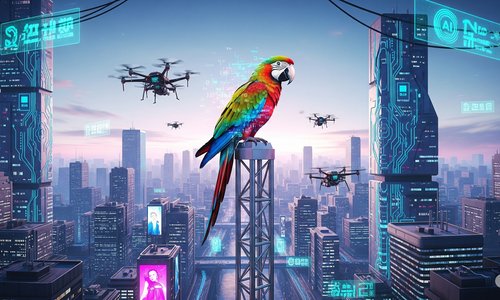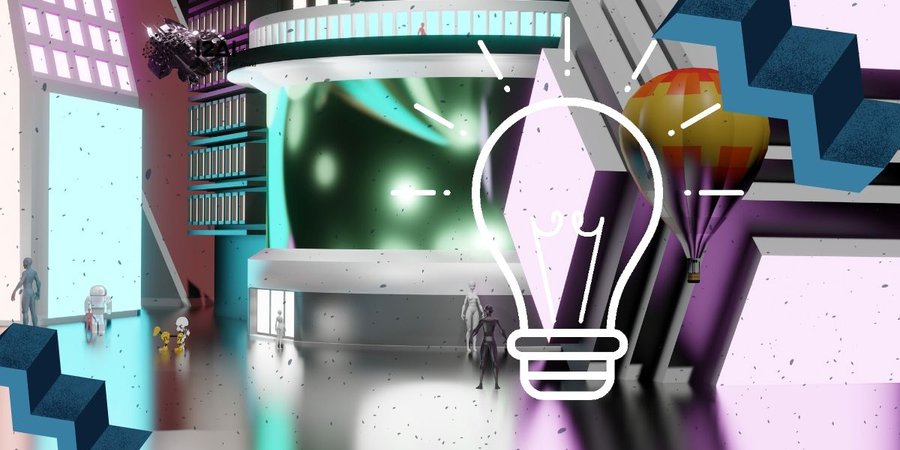
A Promessa e o Perigo da Nova Revolução Digital
A nova corrida tecnológica global levanta uma pergunta urgente: estamos prontos para confiar na inteligência que criamos?

E, quando abertas, as três partes formam uma superfície maior, usadas para escrever ou desenhar. Em uma linguagem mais contemporânea, um tríptico é um objeto usado para comunicação, que pode ser condensado ou expandido. Um dos trípticos mais famosos chama-se “O Jardim das Delícias Terrenas”, mostrado na ilustração acima. Esse tríptico foi pintado em 1504 pelo pintor holandês Hieronymus Bosch. E agora vamos ver o que o tríptico tem a ver com o metaverso.
No final do ano passado, logo depois do anúncio da Meta pelo então Facebook, comecei a dar atenção ao que poderia ser uma nova implementação do metaverso. Esse interesse foi despertado em parte pelos maus resultados obtidos na onda anterior desse mesmo metaverso. Mesmo com resultados ruins, resolvi dar uma chance para o que estava acontecendo.
Como faço sempre, abri o coração para novos conhecimentos ao mesmo tempo em que resolvi resgatar os conhecimentos antigos. Então percebi o óbvio: para buscar resultados melhores, era preciso evitar a repetição dos erros. Uma das formas de conseguir isso é rever os conceitos anteriores, aperfeiçoar o que for possível e agregar as novidades que o avanço da tecnologia sempre apresenta. Também um pouco óbvio. Só que bem amplo. Foi aí que a inspiração do tríptico apareceu. Percebi que a melhor abordagem do novo/velho tema do metaverso seria em três etapas, como em um tríptico.
Uma etapa introdutória, que resgata conceitos históricos já consagrados. Se você é daqueles que gosta de saber de onde as coisas vêm, é bom começar por aqui. O título desse primeiro artigo é “Meta o quê?”.
Uma segunda etapa totalmente dedicada aos negócios, que, não por acaso, é a mais longa. Aqui estão os possíveis modelos de utilização comercial do metaverso, recomendações, riscos e controvérsias que as novas tecnologias produzem. Por exemplo: para o mundo dos negócios, o aspecto onírico do metaverso anterior mais assusta do que atrai. O título desse artigo é “O negócio do & no metaverso”.
E uma última etapa mostrando que, apesar de não atenderem por esse nome, já existem metaversos implementados por aí. Esse conteúdo vai alertar você para o que há de mais sério no tema. O título desse artigo é “Problemas que só um metaverso resolve”.
Como em um tríptico, os conceitos se completam na observação das três partes. Mas cada uma delas tem seu próprio significado.
Agora, vale observar o tríptico criado pelo Hieronymus Bosch em 1504. Para muitos estudiosos da arte, Bosch pode bem ser considerado o primeiro artista surrealista. Já em 1504, suas imagens se assemelham às dos avatares atuais. É essa semelhança que as ilustrações a seguir tentam mostrar. A primeira imagem imagem mostra avatares contemporâneos em uma reunião no Second Life atual. Observe a presença de formas zoomórficas e antropomórficas. A segunda imagem é um recorte do tríptico “O Jardim das Delícias Terrenas”, com as mesmas formas dos avatares atuais, apesar dos 514 anos que separam uma criação da outra. Ao final, o formato tríptico serviu não só para a divisão do conteúdo em três partes, mas o mais famoso deles mostrou conter elementos semelhantes aos avatares atuais.


A divulgação desse conteúdo será feita semanal, toda sexta-feira.
Suspeitamos fortemente que você sairá dessa experiência com uma nova e sólida visão sobre o que é e o que não é o metaverso. É esse o nosso objetivo.

A nova corrida tecnológica global levanta uma pergunta urgente: estamos prontos para confiar na inteligência que criamos?

Por que dominar a IA será a nova alfabetização do século XXI

Conselhos de Administração devem evoluir da supervisão reativa para a antecipação estratégica, frente à crescente complexidade e volatilidade dos ambientes de negócios.

De 14 a 25 de julho, reserve suas manhãs das 08h00 às 09h30 para participar da tradicional Maratona I2AI! Uma jornada intensa com debates e palestras sobre temas essenciais: Ética,